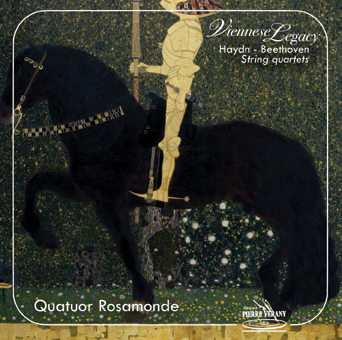Description
Peut-être Haydn n’est-il pas l’auteur du tout premier quatuor à cordes de l’histoire, mais il a créé ce qu’on appelle le modèle viennois de ce genre qui s’est imposé rapidement dans toute l’Europe et a servi de pierre angulaire à tous ceux qui, jusqu’à nos jours, ont composé pour cette formation instrumentale. Dans l’histoire de cette filiation viennoise, Beethoven joue un rôle très particulier puisqu’il a été l’élève de Haydn. Cependant, s’il a reçu des mains de celui qu’on appelait à l’époque « papa Haydn » le flambeau du quatuor, il l’a fait briller d’une manière tellement personnelle, l’a fait si radicalement évoluer et l’a porté si haut qu’avec lui on assiste à une deuxième naissance du genre. Le disque du Quatuor Rosamonde associe judicieusement un des derniers quatuors de Haydn l’Opus 74 n° 3, son 59e, datant de 1792-1793 et l’Opus 18 n° 1 de Beethoven qui est en fait le deuxième qu’il a composé.
Even if Haydn wasn’t exactly the very first composer to write a string quartet, he certainly created what we call the Viennese model of the genre that quickly caught on throughout Europe and was the foundation stone for every composer who has written for this instrumental combination right up to the present day. In the history of this Viennese lineage, Beethoven played a particularly significant role, as he was a pupil of Haydn. However even though he received the torch of the string quartet from the hands of “Papa Haydn”, as he was called at the time, he brought his own particular brilliance to it, developing it in such a radical way and elevating it to such an extent that he effectively gave the genre a second birth. The Quatuor Rosamonde’s disc appropriately brings together one of Haydn’s last quartets, his 59th, Opus 74 n° 3, which dates from 1792-1793 and Beethoven’s Opus 18 n° 1, which is actually the second quartet that he composed.


